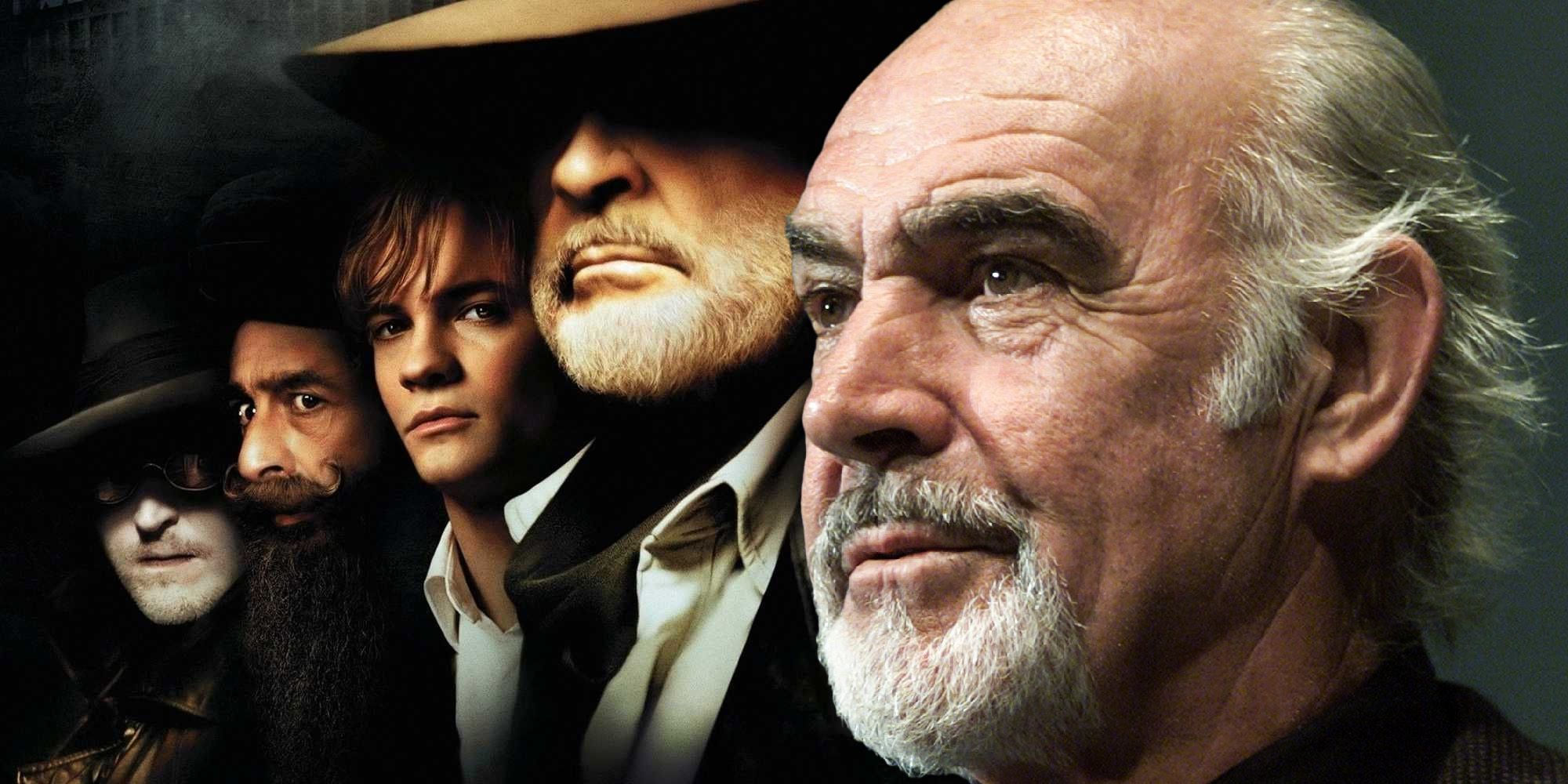The League of Extraordinary Gentlemen
Released in 2003 and directed by Stephen Norrington, is a steampunk‑tinged action‑adventure film adapted from the graphic novel by Alan Moore and Kevin O’Neill. Set in an alternate Victorian era, the film imagines a world on the brink of conflict. In response, the British Crown assembles an unlikely team of legendary fictional characters—Allan Quatermain, Captain Nemo, Mina Harker, the Invisible Man, Dr. Jekyll/Mr. Hyde, Dorian Gray, and Tom Sawyer—to confront a diabolical mastermind known as “The Fantom.”
Sean Connery leads as Allan Quatermain, a rugged and world‑weary explorer whose personal tragedy—his young son’s death—adds a poignant edge to his reluctant leadership. Connery’s gravitas anchors the ensemble, bringing a sense of seasoned authority to the character. The team is diverse: Mina Harker (Peta Wilson) brings vampiric mystery; Nemo (Naseeruddin Shah) offers technological genius aboard his submarine, the Nautilus; Tony Curran’s Invisible Man adds cunning stealth; Dorian Gray (Stuart Townsend) embodies eternal youth; Jason Flemyng bluntly portrays the duality of Jekyll and Hyde; and Shane West’s Tom Sawyer brings youthful espionage charm.

The plot kicks off with chaos in Venice—an early attempt by the Fantom to bomb the city using a modified warship. The League pursues the conspiracy through Europe and into the Arctic, where they uncover the Fantom’s hidden base and an army of automaton soldiers. Betrayal fractures the team, leading to a climactic confrontation in a frozen fortress. Though the action sequences are grand, many critics argue they suffer from excessive CGI and hurried editing, weakening narrative clarity.
Critically, the film underperformed. On Rotten Tomatoes it scores around 16%, and Metacritic indicates generally unfavorable opinions with reviews criticizing its muddled storytelling and cliched dialogue. Roger Ebert awarded it one star, remarking on its “incomprehensible action” and dramatic incoherence. Cast and production issues reportedly exacerbated the film’s challenges—conflicts between Connery and Norrington, coupled with set damage from flooding in Prague, disrupted filming. User reactions ranged from harsh condemnation to nostalgic appreciation for its retro‑charm; some viewers praise the production design and Connery’s performance, with one IMDb user noting that despite expectations, the film "does a good job bringing each character to life," particularly Connery's and Townsend's roles.

Financially, the film yielded mixed results—it opened at number two in North America and collected around $179 million globally on a $78 million budget. While financially viable, it failed to spawn the cinematic universe that Fox had envisioned. Still, its ambition and aesthetic—blending Victorian iconography with action-packed spectacle—have earned it a modest cult following among steampunk and classic adventure fans.
In hindsight, The League of Extraordinary Gentlemen stands as a cautionary tale of ambition overshadowed by execution flaws. Its concept—a team‑up of literary heroes—is inherently compelling, but the final product struggles under tangled plotting and overreliance on effects. Nevertheless, Sean Connery's commanding presence and the visual inventiveness of the setting offer moments of entertainment. For viewers attracted to adventurous ensemble pieces, steampunk visuals, or Connery’s final significant lead role, the film still holds a measure of appeal—warts and all.



